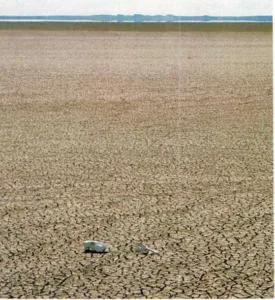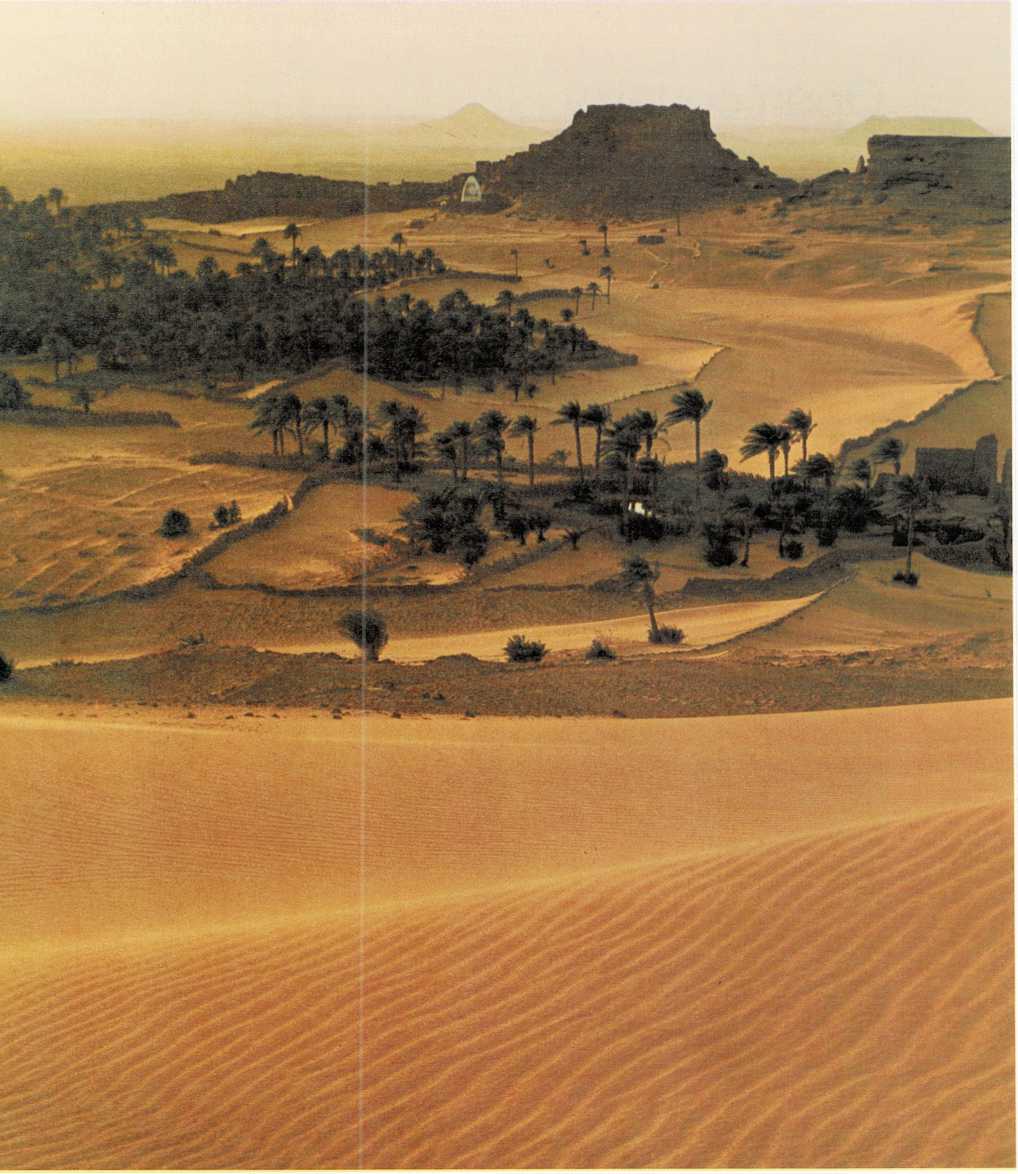
an oasis in the Sahara, Algeria
Dry lands
The golden, glowing sun glares down on a vast sea of sand. As far as the
eye can see, the sand stretches in great yellow-brown ripples. The air
is so hot you can see it shimmer as it rises from the sand. There is not
even the tiniest green plant anywhere in sight.
Whenever most people think of a desert, they usually think of an
endless, hot sandy land. But there are actually many different kinds of
deserts.
Some deserts are rolling, sandy places where hardly any kind of plant
can grow. Some are flat plains that are covered with many kinds of
plants. Even the world’s biggest, hottest desert, the Sahara, has small
patches of trees and grass in some places. Such a patch of greenery is
called an oasis.
Some deserts are hot all year round. Others are hot in the summer and
cold in the winter. Some deserts are great bare places on the shores of
seas. Others are rocky places high up in mountains. But all deserts,
wherever they may be, are the earth’s dry places— places where little
rain falls.
It does rain in deserts, but usually only a tiny bit. Some parts of
deserts go for many years without rain, then get just a sprinkle.
Sometimes a desert is so hot that the rain dries up before it reaches
the ground!
But some deserts get cloudbursts. Then, rain pours down on parts of the
desert. In fact, the heavy rain may cause sudden floods. The dry earth
can’t soak up the water fast enough, and water quickly fills up the
desert’s low places. But, soon, the ground is again as dry as an old
bone.
Scientists can tell that the deserts now on earth were not always here.
Most of them are probably only a few million years old. At one time,
most of the places we now know as deserts were green and fertile. But
something happened. Changes in the wind and weather made rain stop
falling on these places. Then, year after year, these lands were baked
and dried by the sun until they became the deserts they are today.
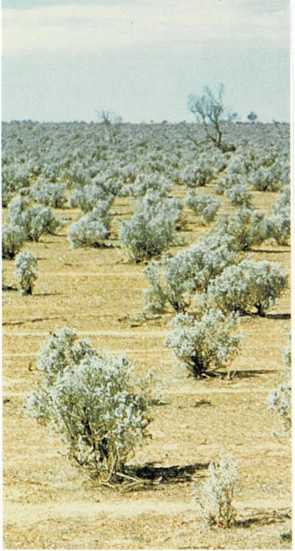
Chalbi Desert, Kenya

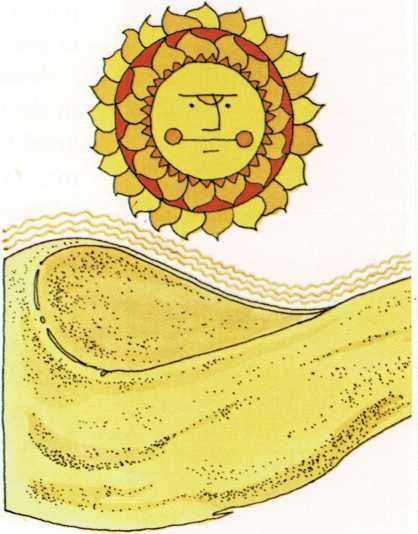

Nullarbor Plain, Western Australia

It’s a Fact
The highest temperature of anyplace in the world was recorded in the
Sahara— a temperature of 136 degrees Fahrenheit (58° Celsius).
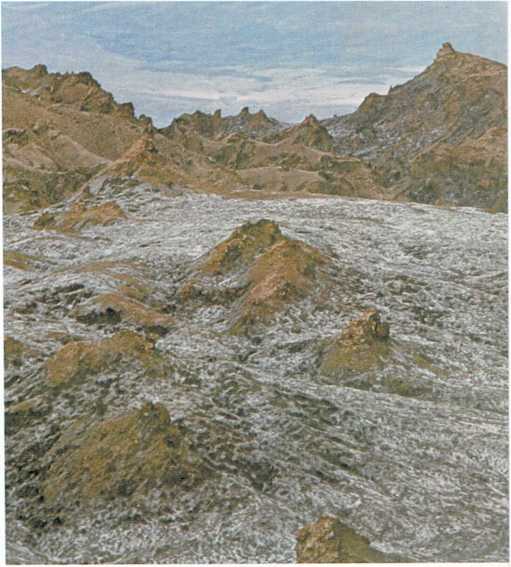
Atacama Desert, Chile

